Do you have a question about the Panasonic TH-75EQ1W and is the answer not in the manual?
Guidelines for securely installing the display on a wall or pedestal using optional brackets.
Instructions and warnings related to the installation of the display unit.
Specifies operating temperature limits and required ventilation space for the display.
Check the included accessories and items provided with the display unit.
Instructions for connecting the power cord and securing cables to the unit.
Details on connecting various video equipment via HDMI, DVI-D, AV IN, etc.
Instructions for connecting via Serial IN and USB terminals.
Details audio output and IR IN/OUT terminal connections.
Locating and identifying controls on the display unit itself.
Identifying buttons and functions on the remote control transmitter.
How to turn the unit on/off and use the remote control sensor.
Steps for initial unit setup and turning the power on for the first time.
How to switch between different input sources like HDMI, PC, USB, etc.
Checking the current setting status of input label, picture mode, etc.
Instructions for adjusting the sound volume level.
How to temporarily mute and unmute the audio output.
Setting the display to switch to standby after a fixed period.
How to select and change picture aspect ratio modes like Full, Normal, H fit, V fit.
How to zoom into specific screen areas and adjust zoom ratios.
How to display, select, and set items within the on-screen menu system.
Configure signal input types, noise reduction, and frame creation.
Manage power-on behavior, no-signal power off, and power management functions.
Configure LAN settings, network control, and protocols for network connectivity.
Settings for playing media from USB devices and viewing files.
Selects audio output between internal speakers or external audio out.
Adjusts sound modes (Normal, Dynamic, Clear) and audio balance.
Switches picture modes (Standard, Vivid, Graphic, DICOM) for optimal viewing.
Adjusts Backlight, Contrast, Brightness, Colour, and Hue for optimal picture quality.
Stores custom picture settings as profiles for quick recall.
Applies stored picture profiles or renames/deletes them.
Enables, sets intervals, start/finish times, and power-off behavior for screensaver.
Enables display shifting to prevent image retention and customizes input signal labels.
Configures power consumption reduction modes (On, Custom, Input Detection).
Specifies audio input source for different video terminals.
Enables and configures HDMI-CEC for interlocking control with connected devices.
Disables input operation by locking the selected input source.
Configures images displayed on power-on or when no signal is present.
Aligns multiple displays horizontally/vertically for combined viewing.
Configures scheduled power and input changes based on time and day.
Manually sets or synchronizes the unit's date and time.
Controls clock display and synchronizes time across network displays via NTP.
Enables network control and manages display names on the network.
Configures IP address, subnet mask, gateway, and command port for network.
Sets video playback modes, still picture rotation, and resume play.
Checks scenario files and displays codec information for media playback.
Assigns functions like Input, Memory Load, or Shortcut to numeric buttons.
Sets whether to display the function list when numeric buttons are pressed.
Adjusts menu display position and duration on the screen.
Controls the display and transparency of on-screen messages.
Displays serial number, software version, and license details.
Copies display data via USB/LAN and resets unit data to factory defaults.
Sets display ID, controller ID, and serial response for external control.
Configures how warning and error messages are displayed for no signal or temperature.
Sets maximum volume limits and levels for audio output.
Limits operation of unit and remote control buttons, including power button.
Limits the operation of buttons on the remote control based on user level.
Sets the PC input mode according to the signal format (RGB or YPBPR/YCBCR).
Ensures necessary environment for connecting computers to the network.
Details LAN connection, browser requirements, and network setup.
Details command transmission format and response data for LAN control.
Lists commands supported for controlling the unit via PJLink protocol.
Supports Multi Monitoring & Control, Video Wall Manager, and Content Management Software.
Configures computer network settings for connecting to the display.
Enables JavaScript and configures browser settings for unit control.
Navigating through status, display control, detailed setup, and remote control pages.
Viewing display status, firmware version, and network configuration details.
Performing detailed functions and configuring network settings via web browser.
Sets clock, time zone, and display synchronization settings.
Performing ping tests and setting up command port for network control.
Configures PC for receiving status notifications and SNMP trap settings.
Sets SNMP version, community name, user, and trap settings.
Guides on changing user and administrator passwords for security.
Operating the display using the Crestron Connected interface.
Configures control system communication and user password for Crestron Connected.
Viewing display name, MAC address, resolution, power status, and network status.
Displays still pictures and motion pictures from USB memory.
Explains setup for single unit playback and multi-unit synchronized playback.
Lists supported USB memory devices and file formats for media playback.
Checks USB memory contents for errors, providing error codes and details.
Configures LAN connection and IP addresses for multi-display synchronization.
Steps to start and end media playback for single and multi media players.
Sets whether to resume playback from the last played file or start from the beginning.
Creates and edits scenario files for USB media player playback.
Uses CMS to create schedule data for playback of pictures, music, and control.
Enters schedule play mode, handles input switching, and disabled functions.
Lists supported file formats for still pictures and motion pictures in schedule playback.
Plays music content and switches input source according to schedule.
Manages power on/off and multi-display settings for scheduled playback.
Lists supported file formats for still pictures and motion pictures in Memory Viewer.
Details how to display, navigate, and view files in thumbnail or list format.
How to select picture files from the list and play them.
How to select video/music files and control playback.
Connect and configure HDMI-CEC for interlocking control with connected devices.
Explains interlocking operations for power and input switching between devices.
Lists settings and data that can be copied via USB or LAN for cloning.
Steps to copy display settings and data to a USB memory device.
Steps to copy saved settings from USB memory to the display.
Selects target displays on the subnet for copying data via LAN.
Guides on entering the current and new passwords for cloning function.
Configures network settings using a USB memory device.
Creates LAN setting files on USB memory and copies them to the display.
Sets the remote control's ID to match the display's ID for multi-display control.
Resets the remote control ID to default (ID '0').
How to enter text and names using the on-screen keyboard.
Lists supported video signals, resolutions, scanning frequencies, and plug-and-play compatibility.
Resets picture, sound, setup, and position settings to factory defaults.
Resets button locks and controller settings to default (Off).
Checks for common picture/sound issues like interference, no sound, or no picture.
Troubleshooting power interruptions, blinking indicators, and remote control problems.
Lists model numbers, power consumption, and standby power details.
Details screen dimensions, pixel count, panel type, and backlight technology.
Provides physical dimensions (W x H x D) and mass for each model size.
Details specifications and connections for HDMI, DVI-D, and AV IN terminals.
Details specifications and connections for PC IN, Audio Out, Serial, LAN, and USB ports.
Information on AVC, VC-1, and MPEG-4 licenses for video encoding/decoding.
Guidance on proper disposal of electronic products and batteries according to regulations.
Space for recording model/serial numbers and contact information for service.
| Screen Size | 75 inches |
|---|---|
| Display Type | LCD |
| Brightness | 350 cd/m² |
| Contrast Ratio | 1200:1 |
| Response Time | 8 ms |
| Speaker | 10W x 2 |
| VESA Mounting | 600 x 400 mm |
| Panel Type | IPS |
| Resolution | 3840 x 2160 |
| Viewing Angle | 178° |
| Input Terminals | HDMI, DisplayPort, USB |
| Output Terminals | Audio out (3.5mm) |
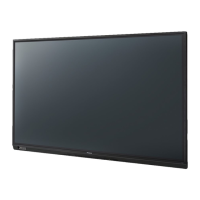

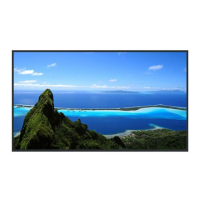
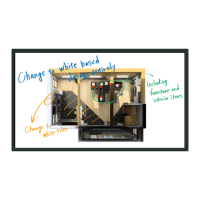


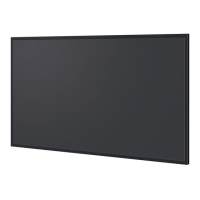


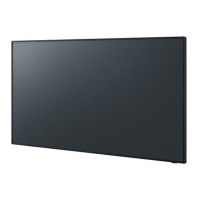
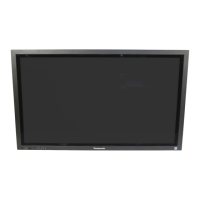
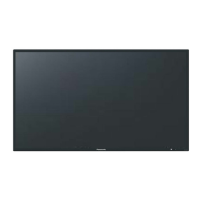
